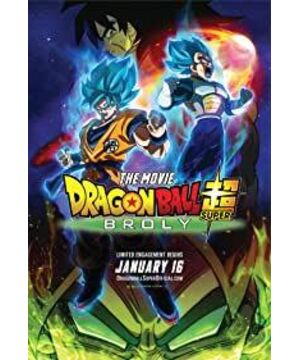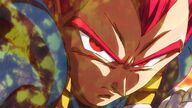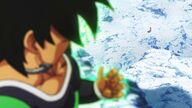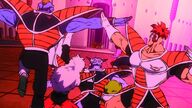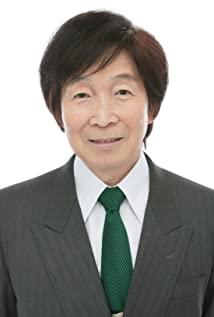What do you think of Sun Wukong? Stylistic two blossom? "Monkey Brother Monkey Brother You Are Really Amazing" theme song? The continuous broadcast of the satellite TV channel during the winter and summer vacations every year?
For the post-80s and 90s, Sun Wukong is the protagonist in the anime "Dragon Ball". He was born on Planet Vegeta and is the son of the Saiyan warrior Bardock. He was sent to Earth at birth and adopted by Grandpa Sun Gohan. . He studied martial arts with Son Gohan since childhood and eventually became the strongest warrior.
[Monkey King in Japanese anime]
Last week was Children's Day. The latest Dragon Ball movie "Dragon Ball Super: Broly" was released. A group of post-80s and post-90s entered the cinema with feelings, but in the end they couldn't hide their loneliness: the box office of this film was only more than 30 million , far lower than "Godzilla 2", and even far less than "Doraemon" and "Detective Pikachu", which are also adapted from Japanese comics.
The indisputable fact is: the attention of "Dragon Ball" is getting smaller and smaller, and the real memory of Dragon Ball is gradually disappearing.
Why is "Dragon Ball" not popular? We look through the TV station, no channel will broadcast this animation, its comic book is hard to find in ordinary bookstores, and 34 years have passed since it was born in 1985, when it was released in mainland China from 2000 to 2005 The group of children watching also reached their thirties. As a cultural phenomenon, the birth, popularity and loneliness of "Dragon Ball" are worth studying.
1. The present of Dragon Ball
In fact, "Dragon Ball" is still quite popular, but it is not the original "Dragon Ball".
Two years ago, "Monkey King" in "Dragon Ball" defeated Pikachu and successfully competed with Naruto Uzumaki ("Naruto"), Shui Bingyue ("Sailor Moon"), Luffy ("One Piece"), Mario Together with famous Japanese anime characters, they have become the image ambassadors of the 2020 Tokyo Olympics. It also speaks to Goku's influence in the world: a truly international anime character.
At this time, our "international superstar" couldn't sit still. Mr. Zhang Jinlai, who played the classic image of the Monkey King, expressed his opinion on this matter: the animation "Dragon Ball" is not something of our nation, and it will make Sun Wukong The mustache is like a ghost, which affects our own Monkey King.
Whether this is correct or not, everyone understands in their own hearts. But Mr. Zhang is still a "cultural symbol" no matter how you say it. Every winter and summer vacation, "Journey to the West" will never stop broadcasting. It is also the first choice for TV stations to broadcast in the early morning hours when there are few people watching. Our own Sun Wukong There are nearly ten versions of the image, twenty different stories, and hundreds of games have adopted their concepts.
When Sun Wukong came to Japan, he became the image in "Dragon Ball". The embarrassing thing is that with the introduction of a large number of Japanese comics from the mainland in the 1990s, these animations have become the common childhood memories of the post-80s and post-90s. After the imported products derived from our traditional culture become one of our feelings, they will inevitably be gradually forgotten. Therefore, we will miss Goku and Dragon Ball at that time.
In addition, due to the huge influence and emotional role of Dragon Ball, the major clothing brands that began to take the retro style began to use the characters of Dragon Ball as joint names. Several big-name international sportswear manufacturers have successively launched "Dragon Ball" co-branded shoes, and Uniqlo also has a Dragon Ball series of T-shirts. The Dragon Balls of this era jumped out of the screen and lived more in three-dimensional space.
But everyone's attention doesn't seem to be on Dragon Ball itself. When the co-branded shoes first came out, it was hard to find a shoe, and it was fired to a sky-high price. Some people queued up to buy shoes just because it was a limited co-branded edition. And Dragon Ball itself is just a symbol borrowed by merchants. Because of a pair of shoes, there is very little understanding of the story behind this series. We pay too much attention to the image created by Dragon Ball and ignore its own meaning.
The Dragon Ball anime is not over yet, and the story of the Saiyans has no real end. Akira Toriyama will also continue to create this animation. It is a pity that nowadays people prefer superheroes with stunts and technology, and the era of Dragon Ball is stuck in memories and commercialized substances.
Dragon Ball is still on fire, but it's not pure anymore.
The past of Dragon Ball
In 1984, Japanese manga writer Toriyama Akira began to serialize his works on the Japanese manga journal "JUMP".
Before that, Akira Toriyama had been working together for five years because of his "Doctor Q" and the comic editor Kazuhiko Torishima, who was also a rookie at the time. However, after 1984, the two people's ideas were exhausted and they could not come up with good works.
Shueisha, the animation company they work for, hopes that they will soon produce a comic with Chinese Kung Fu elements, so Akira Toriyama picked up the two works that he had created in one episode, "The Turtle Riding Boy" and "Little Dragon". The Great Adventure, referring to the names of the characters in "Journey to the West", plus his love for Bruce Lee, drawing on the title of Bruce Lee's movie "Dragon and Tiger Fight", combined with martial arts, it was born in Japan, with a cumulative distribution of more than 160 million copies , "Dragon Ball" with a circulation of far more than 250 million copies in the world.
After that, in 1986, Dragon Ball animation was put on the screen. In 1988, Hong Kong Jade TV introduced this animation. In 1998, Dragon Ball was broadcast on Beijing TV and Shenzhen TV in the mainland. Wave Dragon Ball Tide, but the Dragon Ball cartoon at that time only broadcasted the episode in which Piccolo was defeated. After that, the story of Sun Wukong's growth, Sun Wuhan, Sun Wutian and Vegeta was not told, and the only follow-up story was obtained. The way is to buy VCD.
The commercial value of Dragon Ball animation is also average. The pictures and dolls at that time almost included all the "peripheries" of Dragon Ball that children could come into contact with. In 2005, the mainland published the first simplified Chinese version of the Dragon Ball comic book, a total of 42 volumes.
With its publication, in 2006 and 2007, Kaku animation and other local stations began to release follow-up stories, and added theatrical versions such as "Warrior Z". Therefore, the one who fully appreciates Dragon Ball is the 90 to 95 generation. At that time, everyone was discussing the duel between Frieza and Goku. By reading comics, the children they liked would create their own creations and continue the Dragon Ball story they imagined.
In short, at that time, I couldn't see the animation in the theater, I couldn't watch the full episode, and there were no joint names for you to buy.
But at that time, Dragon Ball was really hot.
3. The culture behind Dragon Ball
The success of Dragon Ball actually comes from the culture it has - a combination of Japanese cyberpunk and Zen.
In the 1980s, Japan ended the technological war with the United States, suspending technological development, and handing over a large amount of market share to the Koreans, but the rapid development brought by the last decade gave the Japanese a strong technological imagination.
So you can see countless high-tech in Dragon Ball, aircraft that do not match the times, universal capsules, full of cyberpunk style.
As a hot-blooded anime, the most touching thing about "Dragon Ball" is the calm attitude of the protagonists in the face of danger. Sun Wukong's concept of fighting cannot be explained simply by the thought of "giving up his life for righteousness". His indifference to fame and life and death mainly stems from Japanese Zen culture.
We will find that the profound meaning of martial arts is mixed in Dragon Ball, and because of Japan's respect for the spirit of Bushido, it pays special attention to the simplicity and purity of Zen.
The cosmic king Frieza in "Dragon Ball" relies on power to dominate hegemony, and Saiyan prince Vegeta uses strength to prove his dignity. Only Sun Wukong has the simplest thinking and the fewest distractions. He is not obsessed with any appendages brought by power.
Only focus on the martial arts itself with a pure mind. Sun Wukong's practice is different from the step-by-step training of Western fighting training, nor does he pay attention to Indian-style ascetic practices, but is just as Gui Xianren taught him: "Eat well, sleep well, study well, and play well". These sixteen characters, which are the simplest and the most difficult for ordinary people to implement, are the true portrayal of Sun Wukong's practice of martial arts throughout his life.
Not deliberately, not wanton, without any unnecessary interference, just enjoy the most simple beauty of the moment. This is the main reason why Sun Wukong can master the freedom to become the strongest warrior, but Vegeta can't.
The fusion of Zen and technology contributes to the uniqueness and greatness of this comic. If the profound meaning of the times and the spirit can be added to cultural works, what does it have to do with whether it is popular or not? Either way, at least it represents an era.
View more about Dragon Ball Super: Broly reviews


